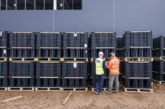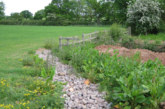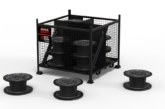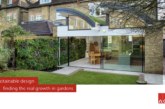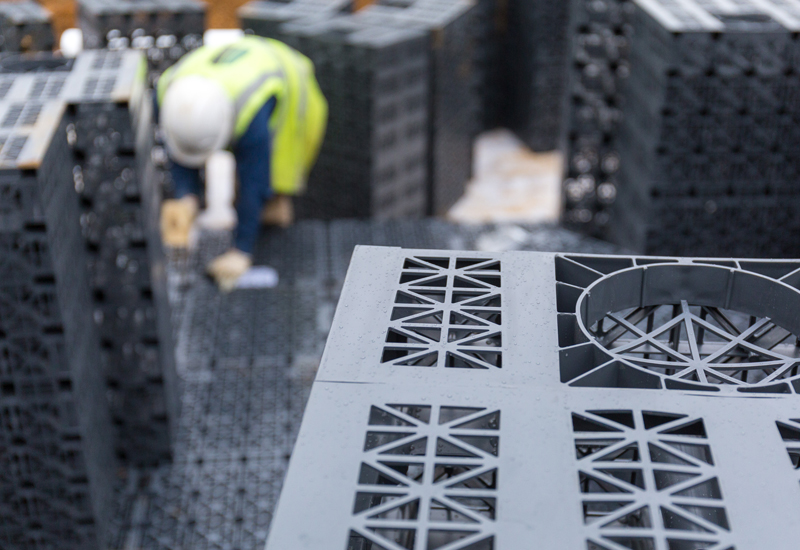
George Gray, Product Manager at Wavin explains how a sustainable urban drainage system (SUDS) and strategies can enhance drainage and help to reduce flood risk across new developments.
Since flooding devastated large parts of the UK last winter, the need for secure, sustainable drainage has become an increasingly important consideration at every new-build development. And with an increased risk of flooding due to urbanisation and a changing climate, it’s an issue that housebuilders and developers must take very seriously if they want to help the encumbered sewerage network cope with intensive rainfall to reduce incidents of flooding.
According to the Environment Agency, flooding is the most common and widespread natural disaster in the UK and an issue that won’t dry up without investment and planning. The more we urbanise our landscape, the more we reduce the amount of land that rainfall is able to soak away into the ground. The traditional approach of combining the surface water with the foul sewage system is costly, while separate surface water sewers that discharge directly into local watercourses pose environmental risk if misconnections occur between the two systems.
Rainfall has to be controlled in a manner which avoids using the already overloaded sewer system. Many existing drainage systems can cause problems of flooding, pollution or damage to the environment and are not proving to be sustainable in the long term. As a result, many housebuilders and developers across the UK are turning to Sustainable Drainage Systems (SuDS) at an early stage of the planning process to mitigate flood risk.
“Specifying drainage systems at the earliest stages of site selection and design makes it easier to integrate into developments.”
Sustainable drainage mimics natural drainage processes by allowing rainfall to soak into the ground where possible or by delaying discharges. Reducing both the volume and rate of surface water run-off to sewers and watercourses, this helps to improve water quality, ecology and amenity value of watercourses. It is important, however, to remember that there is no single drainage solution for any one site.
Planning a SuDS strategy
As more and more homes are built on flood plains to satisfy the demand for new houses, a more collaborative approach and an increase in the use of SuDS will help to manage the risk of surface flooding. Specifying drainage systems at the earliest stages of site selection and design makes it easier to integrate into developments whilst influencing other aspects of the site and reducing impermeable areas wherever possible.
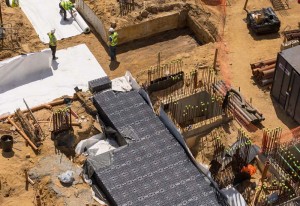 As with other key considerations in the planning process, such as transport, materials and safety, effective early engagement with stakeholders should also help deliver SuDS in multi-functional spaces such as car parks, footpaths and verges, gardens, landscaped areas, driveways, courtyards or communal spaces. This should improve the cost effectiveness and integration within the development resulting in better places to live.
As with other key considerations in the planning process, such as transport, materials and safety, effective early engagement with stakeholders should also help deliver SuDS in multi-functional spaces such as car parks, footpaths and verges, gardens, landscaped areas, driveways, courtyards or communal spaces. This should improve the cost effectiveness and integration within the development resulting in better places to live.
The numerous characteristics of a site mean that certain sustainable drainage functions may be more appropriate than others. The variety of SuDS components and design options available allows designers and planners to consider local land use, future scenarios, and the needs of local people when undertaking the drainage design.
There are also a number of options from natural above ground SuDS solutions including swales, detention ponds, basins and permeable surfaces to engineered solutions such as concrete culverts, plastic pipes, attenuation tanks and soakaways.
A modern modular solution
Across virtually all areas of construction, modularisation has grown in popularity in recent years as we look for ever more efficient and economical products and systems. Faced with rising costs and stricter deadlines, modular rainfall management has become an increasingly popular choice, offering both on and off site benefits to every stage of the supply chain, from the architect and specifier to the contractor and client.
Easily assembled, geocellular AquaCell units can simply be clipped together to form underground structures for the temporary storage of excessive rainwater. For additional strength, they can be designed and laid in a ‘brick bonded’ format for enhanced stability – forming the required volume before being wrapped in either geotextile or membrane options.
Geocellular structures
With an increased focus on SuDS compliance, there has also been a sharp increase in the use of geocellular stormwater management units to create underground structures for infiltration or the temporary storage of stormwater.
A high-strength, factory-engineered, geocellular stormwater management unit can be constructed to accommodate calculated run off volumes, thus providing greater assurances to developers, authorities adopting the drainage systems, homeowners and insurers alike. The fact that these tanks are buried allows the land above them to be used to create amenity and biodiversity. This potential for land use above these systems is far safer and more valuable in terms of amenity than large ponds or basins.
As concerns grow over climate change and urban development, geocellular stormwater management units are proving to be a popular choice at sites across the UK. From individual houses to large scale housing/commercial schemes, geocellular units such as AquaCell can work in association with the more traditional SuDs solutions to provide a more effective flood protection system in both the short and long term.
Aquacell
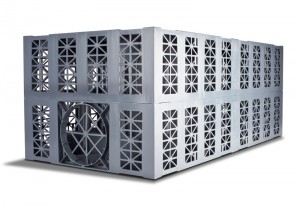 AquaCell from Wavin is a tried and tested modular technique for managing excessive rainfall and is proven as one of the most effective ways of recharging local groundwater. The modular nature of AquaCell makes it perfect for dealing with any given requirement, from just a few units acting as a soakaway, to thousands of units creating a vast underground reservoir. As part of a complete solution, it can work in association with traditional SuDS solutions to provide the most effective long term flood protection.
AquaCell from Wavin is a tried and tested modular technique for managing excessive rainfall and is proven as one of the most effective ways of recharging local groundwater. The modular nature of AquaCell makes it perfect for dealing with any given requirement, from just a few units acting as a soakaway, to thousands of units creating a vast underground reservoir. As part of a complete solution, it can work in association with traditional SuDS solutions to provide the most effective long term flood protection.

